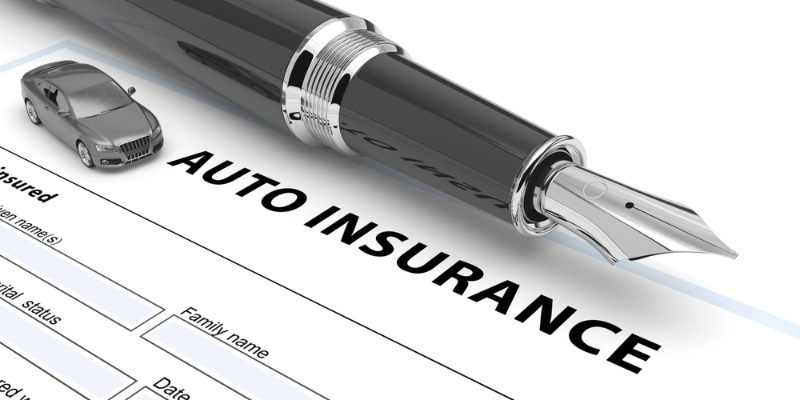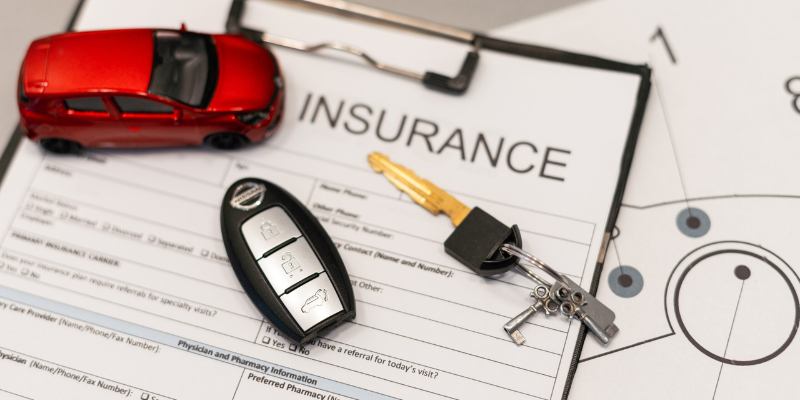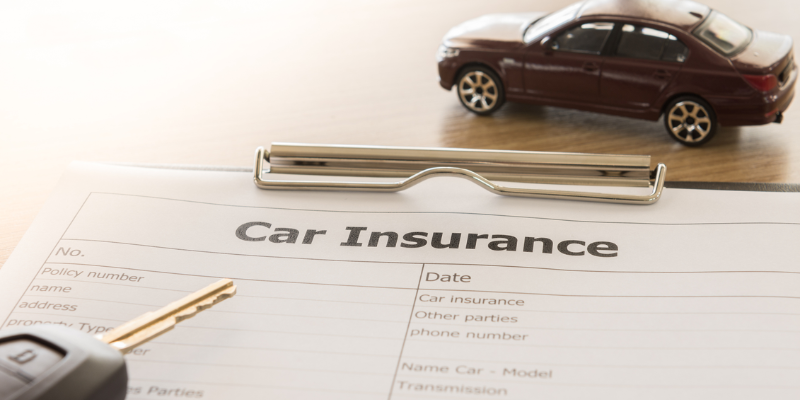In this article, Goldnews24h will accompany you to explore the critical landscape of automotive insurance when you choose to lease a vehicle. Leasing offers an attractive pathway to driving a new car with potentially lower monthly payments, but it comes with specific insurance obligations that differ significantly. Navigating the diverse offerings to find the best insurance for leased cars requires a keen eye for detail, an understanding of risk, and a proactive approach to comparing policies. We will delve into the essential coverages, factors influencing premiums, and strategic approaches to secure comprehensive protection without overspending.
Understanding leased car insurance requirements

Leasing a vehicle fundamentally changes the insurance dynamic compared to purchasing one. When you lease, the leasing company, not you, remains the legal owner of the vehicle throughout the lease term. This distinction is crucial because it means lessors impose stringent insurance requirements designed to protect their asset. Typically, these demands exceed the minimum liability coverage mandated by state laws for owned vehicles. Lessors often require higher liability limits for bodily injury and property damage, ensuring significant protection against potential lawsuits arising. This heightened expectation reflects their vested financial interest in the vehicle’s integrity and market value, which could be severely impacted by underinsurance in the event of a major incident. It is not merely about covering your personal risk, but about safeguarding the substantial investment of the leasing entity.
Beyond elevated liability, leasing agreements almost universally mandate comprehensive and collision coverage. These policies are vital for addressing physical damage to the vehicle itself, regardless of fault. Collision coverage handles repairs or replacement costs if your leased car is damaged in a crash with another vehicle or object, or if it overturns. Comprehensive coverage, on the other hand, protects against a broader array of non-collision incidents such as theft, vandalism, fire, natural disasters like floods or hail, and even impacts with animals. Without these protections, any significant damage to the leased vehicle would leave the driver financially responsible for its repair or replacement, an onerous burden given the car’s actual owner is the leasing company. The specifics of these required coverages, including deductibles and maximum payouts, are explicitly detailed in your lease contract, making a thorough review of this document an absolute necessity before finalizing any insurance policy.
One of the most critical and often misunderstood requirements for leased vehicles is Gap insurance. This specific coverage is essential because new cars, especially, depreciate rapidly, the actual cash value (ACV) paid out by standard collision or comprehensive insurance might be significantly less than the remaining balance on your lease. This gap can leave you owing the leasing company thousands of dollars out of pocket for a vehicle you no longer possess. Gap insurance bridges this financial disparity, covering the difference between the car’s depreciated value and the outstanding lease balance, thereby protecting you, it might even be included in your lease payments or offered as a separate add-on. Understanding whether you need to procure it independently or if it is already covered is a key step in securing the best insurance for leased cars.
Key coverage types for leased vehicles

When securing insurance for a leased vehicle, a robust policy extends beyond the basic legal minimums. The unique financial structure of a lease necessitates a comprehensive approach to coverage, encompassing not just protection for others but also for the vehicle itself and the financial obligations tied to it. The core components typically include liability, collision, and comprehensive coverage, which form the bedrock of any sound automotive insurance policy. However, for leased cars, the emphasis on these particular types of coverage is amplified due to the leasing company’s ownership stake and the inherent depreciation of new vehicles. Goldnews24h emphasizes that selecting the right combination and level of these coverages is fundamental to both compliance and financial security throughout your lease term.
Liability explained
Liability coverage is the foundation of any car insurance policy, protecting you financially if you are at fault in an accident. It typically comprises two main components: bodily injury liability and property damage liability. Bodily injury liability covers medical expenses, lost wages, and pain and suffering for anyone injured in an accident you cause. Property damage liability, on the other hand, pays for damage to another person’s vehicle or property, such as fences, buildings, or utility poles. For leased vehicles, lessors often demand higher liability limits than state minimums. For example, while your state might require 25/50/25 (which means $25,000 for bodily injury, $50,000 for bodily injury, and $25,000 for property damage), your lease agreement could stipulate 100/300/50 or even higher. These elevated limits provide significantly more protection against large claims, mitigating the financial risk for both you and the leasing company should a severe accident occur. Opting for these higher limits is not just a contractual obligation; it is a prudent financial decision to shield your assets.
Gap insurance explained
As highlighted earlier, gap insurance is arguably the most crucial additional coverage for a leased vehicle. Due to rapid depreciation, a new car’s market value often falls below the outstanding lease balance, especially during the initial years of the lease term. If the vehicle is totaled or stolen, a standard insurance payout based on its actual cash value (ACV) would leave a “gap” that you are responsible for covering. Gap insurance explicitly addresses this scenario, paying the difference between the ACV and the remaining amount owed on the lease. Without it, you could be forced to pay thousands of dollars out of pocket for a car you can no longer drive, a significant financial burden. Many leasing agreements require gap insurance, and it might be offered through the dealership, your insurance provider, or even included within the lease terms. Understanding the mechanisms of gap insurance and ensuring you have it is a cornerstone of securing the best insurance for leased cars, providing invaluable peace of mind against unforeseen total losses.
Additional endorsements to consider
While liability, collision, comprehensive, and gap insurance form the core, several additional endorsements can significantly enhance your leased car insurance policy. Rental reimbursement coverage, for instance, provides for a rental car while your leased vehicle is being repaired after a covered incident. This can be particularly useful as lease agreements typically do not pause payments even if your car is unusable. Roadside assistance is another valuable add-on, offering help with common issues like flat tires, dead batteries, lockouts, or towing, which can prevent inconvenient and costly out-of-pocket expenses. New car replacement coverage, though less common for leases, might also be available and could be beneficial depending on your specific lease terms and how total loss payouts are handled. Consulting with your insurance provider to discuss these and other potential endorsements can help tailor a policy that perfectly aligns with your needs and further bolsters the protection for your leased asset.
Factors influencing leased car insurance premiums

The cost of your leased car insurance premium is not a static figure; it is a complex calculation influenced by a multitude of variables. These factors range. Understanding these drivers is essential for any driver seeking the best insurance for leased cars, as it empowers you to make informed decisions that can potentially lead to more favorable rates. Insurance companies use sophisticated algorithms to assess risk, and each piece of information they gather contributes to their overall evaluation of how likely you are to file a claim and how expensive that claim might be. Goldnews24h will break down the primary elements that dictate your insurance costs, providing clarity on where your premium dollars are going.
Firstly, the type of vehicle you lease plays a substantial role. High-performance cars, luxury models, and vehicles with expensive repair parts typically incur higher insurance premiums. This is due to the increased cost of repairs or replacement in the event of an accident or theft. Similarly, vehicles with lower safety ratings, as assessed by organizations like NHTSA and IIHS, might also command higher rates because they pose a greater risk of injury to occupants, leading to more expensive bodily injury claims. Conversely, cars equipped with advanced safety features, such as ADAS like automatic emergency braking, lane-keeping assist, and adaptive cruise control, can sometimes qualify for discounts due to their potential to prevent accidents. The make and model also factor into theft rates; vehicles frequently targeted by thieves often have higher comprehensive coverage costs.
Your personal driving record and demographic information are equally significant. Drivers with a clean record free of accidents, speeding tickets, or other moving violations are generally viewed as lower risk and therefore receive more competitive rates. Conversely, a history of claims or infractions will almost certainly lead to higher premiums. Age and gender can also play a role, with younger, less experienced drivers typically facing higher rates, though the impact of gender varies by state and insurer. Furthermore, where you live and park your car profoundly impacts your premium. Urban areas with higher traffic density, crime rates, or a greater incidence of natural disasters like hailstorms or floods often result in higher insurance costs compared to rural or suburban areas. Even the specific ZIP code can make a difference, reflecting localized risks such as theft or vandalism.
Finally, your deductible choices and credit score (in most states) also influence premiums. Opting for a higher deductible on your collision and comprehensive coverage will generally lower your monthly premium, as you are agreeing to take on more financial responsibility in the event of a claim. However, it’s crucial to select a deductible you can comfortably afford. Your credit score, where permitted by law, is utilized by many insurers as an indicator of financial responsibility, with higher scores often correlating to lower premiums. Additionally, the specific insurance company you choose can have a significant impact, as different insurers weigh these factors differently and have varying pricing structures. This underscores the importance of thorough comparison shopping to uncover the most favorable rates.
Strategies to find the best insurance for leased cars
Finding the best insurance for leased cars requires a proactive and informed approach, leveraging several strategies to optimize coverage and cost. Given the unique requirements of leased vehicles, simply opting for the cheapest policy could leave you inadequately protected and in breach of your lease agreement. Instead, the goal is to secure comprehensive coverage that meets all lessor mandates while remaining affordable. This involves diligent research, smart policy choices, and taking advantage of available discounts. Goldnews24h outlines key strategies to help you navigate the insurance market effectively and make an educated decision for your leased vehicle.
The most effective strategy is to shop around and compare quotes, and endorsements to make a true apples-to-apples comparison. This rigorous process will not only reveal the most competitive rates but also allow you to assess the customer service and claims processing reputation of different insurers, which is a critical factor often overlooked in the pursuit of low premiums. Many leading insurers offer online tools that can quickly generate comparative quotes.
Another potent strategy is bundling your insurance policies. Many insurance companies offer significant discounts when you purchase multiple policies. Inquire about multi-car discounts if you have more than one vehicle in your household, even if only one is leased. Insurance providers are keen to retain customers with multiple policies, making them more willing to offer preferential rates. It is always worth discussing all your insurance needs with a potential provider to see what bundling options are available and how they might impact your total annual insurance expenditure.
Furthermore, actively seeking out and qualifying for discounts can significantly reduce your leased car insurance premiums. Common discounts include those for a good driving record, completing defensive driving courses, having anti-theft devices installed in your vehicle, or being a loyal customer. Some insurers offer discounts for paying your premium in full, opting for paperless billing, or setting up automatic payments. Students with good grades might also qualify for specific discounts. If your leased vehicle is equipped with advanced safety features, such as ADAS, inquire about potential safety feature discounts. It is advisable to thoroughly discuss all potential discount opportunities with your insurance agent or review them on the insurer’s website, as these savings can add up and significantly lower the total cost of your best insurance for leased cars.
Common pitfalls and how to avoid them
Despite careful planning, many lessees encounter common pitfalls when insuring their leased vehicles, often leading to financial complications or non-compliance with their lease agreements. Recognizing these potential traps is as important as understanding the requirements themselves, as prevention is always better than damage control. As automotive experts, Goldnews24h has observed several recurring issues that can trip up even experienced drivers. By anticipating these challenges, you can proactively adjust your strategy to ensure a smooth and secure leasing experience. Avoiding these mistakes is a critical component of truly finding the best insurance for leased cars and protecting your investment.
One of the most prevalent mistakes is underinsuring the leased vehicle. While state minimums for liability coverage might seem sufficient for an owned car, they are almost never adequate for a leased one. Lessors typically require significantly higher liability limits to protect their asset against substantial claims. Failing to meet these specific contractual requirements can result in penalties, including forced-place insurance at a higher cost or even early termination of the lease. It’s crucial to meticulously review your lease agreement’s insurance clause before purchasing any policy to ensure all stipulated coverage levels are met or exceeded. Simply relying on your previous insurance habits for an owned car can lead to a costly oversight that undermines your financial stability.
Another significant pitfall is neglecting gap insurance. As discussed, the rapid depreciation of new vehicles means a standard comprehensive or collision payout for a total loss will likely be less than the remaining amount owed on the lease. Many drivers mistakenly assume their standard policy is sufficient, only to face a substantial financial burden when their car is totaled or stolen. Some lessees might assume gap insurance is automatically included in their lease, but this is not always the case. It is imperative to confirm whether gap insurance is part of your lease agreement, offered by the dealership, or if you need to purchase it separately. Overlooking this vital coverage leaves you exposed to significant out-of-pocket expenses in a total loss scenario, severely impacting your financial well-being.
Finally, not reviewing or updating your policy periodically is a common oversight. Life circumstances change, and so do insurance needs and market rates. Factors such as moving to a new ZIP code, adding or removing drivers. Failing to reassess your policy annually or bi-annually means you could be paying more than necessary or, conversely, have outdated coverage that no longer adequately protects you. Taking the time to compare quotes and review your policy details can ensure you maintain the best insurance for leased cars throughout your lease term, optimizing both your coverage and your cost.
The long-term value of robust leased car insurance
Investing in robust leased car insurance extends far beyond mere compliance with your leasing agreement; it represents a significant long-term value proposition for your financial health and peace of mind. While the upfront cost of comprehensive coverage might seem higher, the protective umbrella it offers against unforeseen circumstances is invaluable. As automotive experts, Goldnews24h consistently advises lessees to view insurance as a critical investment in their financial future, rather than a grudging expense. The benefits of a well-structured policy resonate throughout the entire lease term, safeguarding you against myriad potential liabilities and ensuring a smoother ownership experience.
Primarily, robust insurance provides unparalleled financial protection. In the event of an accident, theft, or natural disaster, comprehensive coverage shields you, adhering to the lease agreement’s insurance stipulations is paramount. Failure to maintain the required coverage can lead to severe penalties, ranging from mandatory force-placed insurance (often at exorbitant rates) to early termination fees and even repossession of the vehicle. By consistently maintaining robust insurance, you eliminate these risks, ensuring you remain in good standing with the lessor and avoid any costly contractual breaches. This compliance fosters a worry-free leasing experience, allowing you to enjoy your vehicle without the constant concern of financial penalties or legal repercussions stemming. This mental comfort is an often-underestimated aspect of insurance value. Furthermore, in the event of a claim, a robust policy with a reputable insurer ensures a smoother, more efficient claims process, minimizing disruption and inconvenience during what can already be a stressful time. Ultimately, the long-term value of the best insurance for leased cars is measured not just in saved dollars, but in the security and tranquility it provides throughout your entire leasing journey.
Final thoughts
Securing the best insurance for leased cars is an essential step in responsibly managing your automotive journey. As Goldnews24h has outlined, it requires a thorough understanding of unique lease requirements, diligent comparison of policies, and a proactive approach to coverage selection. By prioritizing adequate liability, comprehensive, collision, and critically, gap insurance, you safeguard both your finances and your contractual obligations. Remember to actively seek discounts, bundle policies where possible, and periodically review your coverage to ensure it continues to meet your evolving needs and market rates. Making informed decisions now will undoubtedly contribute to a more secure and satisfying leasing experience, allowing you to enjoy your vehicle with complete peace of mind.

